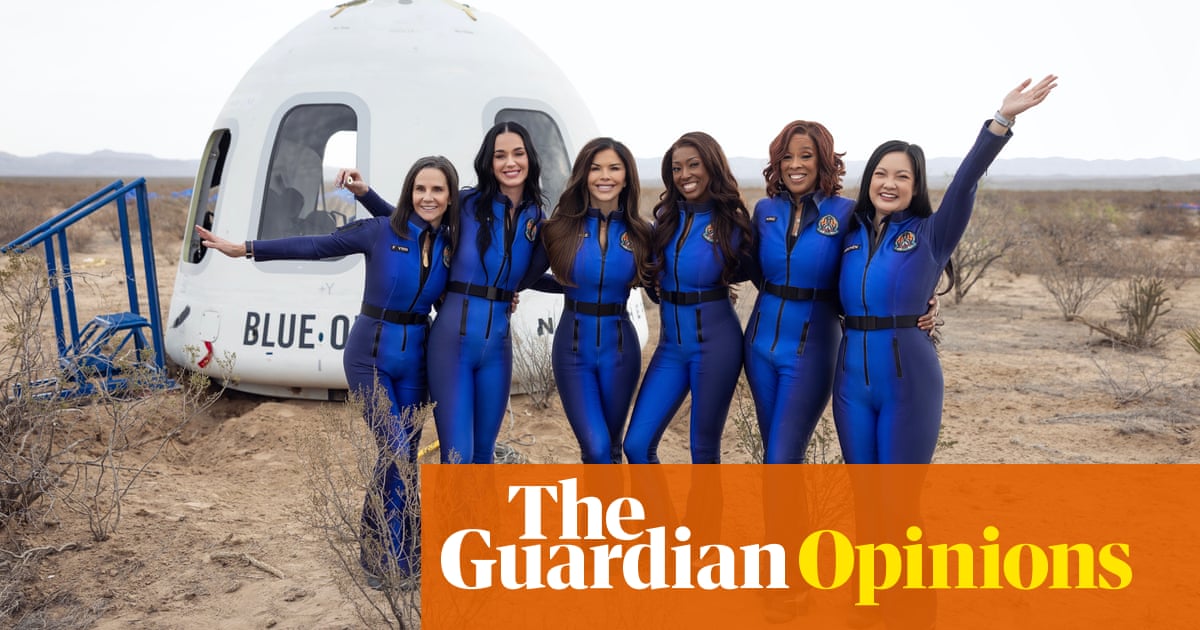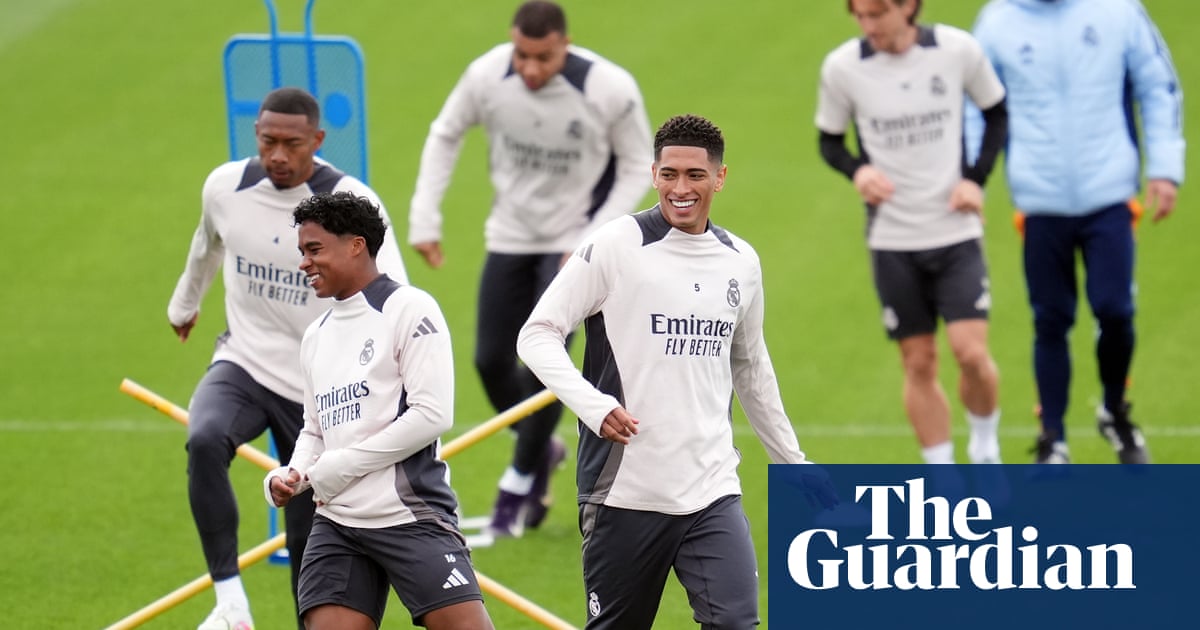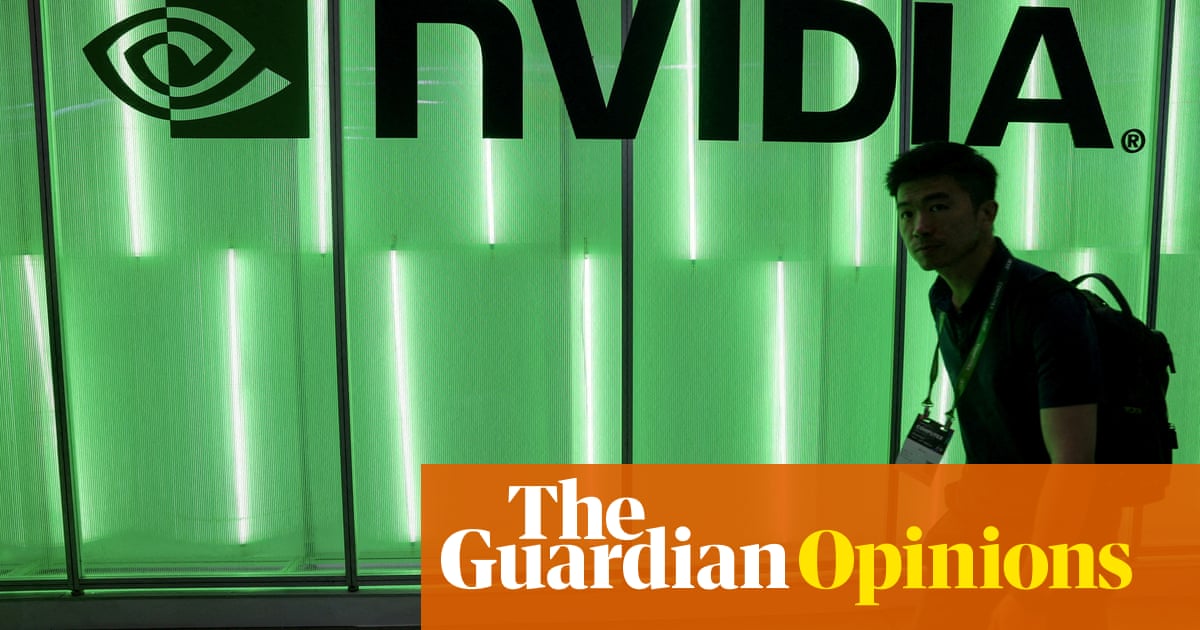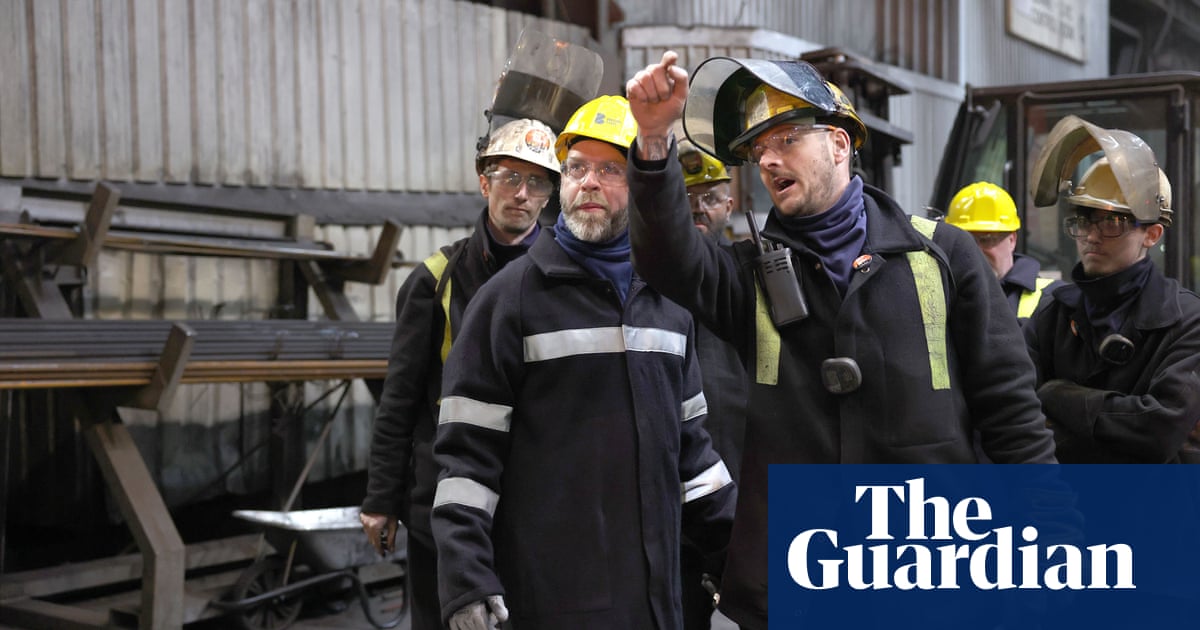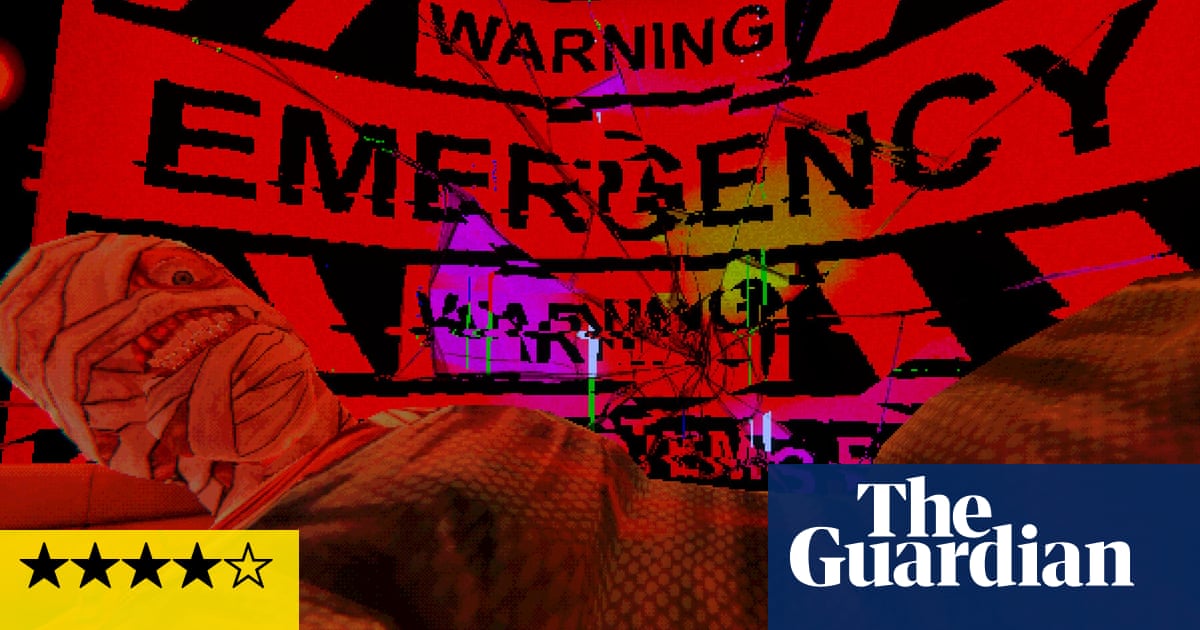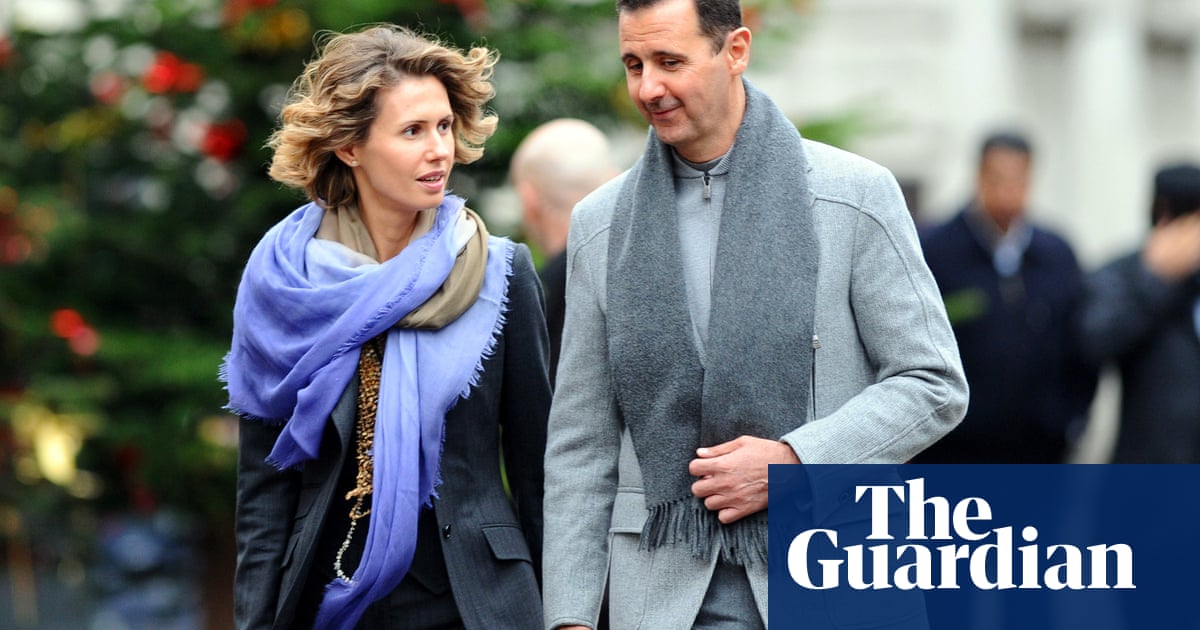Two teenagers plan how to dispatch their latest undead enemy: a kill-shot to the head, or a knife in the side of the neck? One of them throws a glass bottle, distracting their prey. Then she goes in for the kill with all the breezy confidence of a kid playing a video game on easy.
It’s a rare moment of playfulness in the second-season opener of The Last of Us, a show that generally takes its storytelling deadly seriously. While the wildly lucrative Minecraft movie strip-mines its IP for laughs, this celebrated HBO series, adapted from the PlayStation titles of the same name, is as focused on taut character drama as the thrills and spills of the zombie genre.
According to executive producer Carolyn Strauss, a HBO veteran who has commissioned everything from Sex and the City to The Sopranos, showrunner Craig Mazin pitched it to her as a story about love: “He said to me: ‘This is a show about the good and the bad of what love compels you to do.’”
At the end of season one, we saw Pedro Pascal’s gruff smuggler Joel, who lost his own daughter in the opening episode, commit to a horrifying killing spree to save the life of teenager Ellie, played by Bella Ramsey, and, in the process, doom the rest of humanity to a never-ending fungal apocalypse.
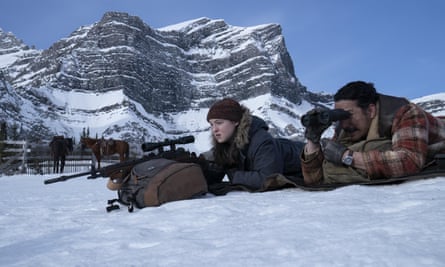
Mazin, an avid gamer, was transfixed by the relationship between the two characters in the video game, where they were brought to life by Troy Baker and Ashley Johnson.
“Troy and Ashley made me connect in a way that I had never, ever felt playing a video game,” he tells me. “And I’ve been playing video games my entire life.”
A non-gamer, Strauss was willing to take his word for it, but she wanted to understand what the game was about. “I made my son play it,” she laughs, “which he was very willing to do! And I just stood over his shoulder. I was drawn into the story very quickly.”
For Mazin, the bold narrative choices of the original games were a large part of their appeal thanks largely to the instincts of creative director Neil Druckmann, with whom he shares a credit on the series.
“Like all good artists, Neil was not content to simply play the song again,” he says of the sequel. “He wanted to challenge the audience.”
When the rights to adapt the first game became available, Mazin leapt at the chance, describing it as “a moment of gorgeous clarity”. Coming off the back of the critically acclaimed Chernobyl, he was confident HBO would commission the show, as long as he could get Druckmann onboard.
“We had lunch and I talked about how much I loved the game and what I thought it was really about, underneath the hood of zombies and fungus and fighting,” he says. “He’s very protective of it, as well he should be. And at that time, video game adaptations didn’t have a good track record.”
That’s putting it mildly. In the past, efforts to drag game characters kicking and screaming into the real world have resulted in some serious stinkers. I grew up with 1994’s Street Fighter, which boasts an 11% Rotten Tomatoes score, and the notorious Super Mario Bros (1993), with its only slightly more respectable 29%.
But it turns out even the ropiest adaptations have their defenders. “Don’t you besmirch Super Mario Bros!” laughs Gabriel Luna, who plays Joel’s brother Tommy in the series. “It’s a good movie!”
Peter Howell, lecturer in computer games design at the University of Portsmouth, is in agreement – to an extent. “Don’t knock it!” he begs. “I admit it was terrible, but 10-year-old me watched it over and over again on VHS.”
Either way, the wacky adventures of Bob Hoskins’ New York plumber are a world away from The Last of Us. Season one received near universal praise, scooping up dozens of awards.
The source material certainly helps. Take, for example, The Last of Us Part II which the latest season of the HBO adaptation is based on. For me, one of the most powerful moments playing it came when I, as Ellie, was exploring Joel’s house and I found a photograph of his dead daughter, Sarah, on a chest of drawers. The level of “interaction” is limited to picking up the photo and taking a closer look, just as it might be in real life, and it has no real bearing on the action of the game. But a tiny moment like that can be unbearably powerful.
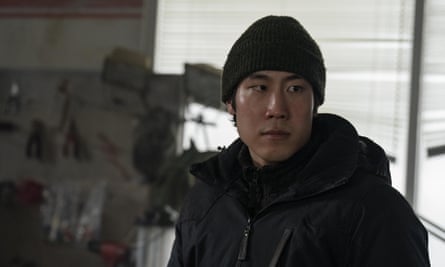
“You’re going through a series of sequences that the game designers have very carefully crafted to give you a particular experience,” says Howell. “Exactly as a director would do in a TV series.”
In this respect, The Last of Us games are very different from the source material for another recent TV success story, Fallout, adapted from a series of open-world role-playing games.
“They come from two different structures of games,” says Howell. “The Last of Us is very character-driven, and the story is pretty linear. It’s third-person, so you’re controlling a character on screen, rather than inhabiting the character. Whereas in the modern Fallout games, which are mostly first-person, the playable character is less narratively developed, so there’s more space for the player to insert themselves into that role, and it’s the player, as much as the character, who’s exploring the world.”
It’s a difference that’s reflected in the two very different adaptations. “The approach they took with Fallout was the right one,” says Howell. “They didn’t try to replicate the narrative framework of the games. They used that setup to tell a new story that the series was better suited to tell, but including enough fan-service details to please existing players.”
Mazin, too, is impressed with the approach taken by the Fallout series. “I know the people who made Fallout care deeply about it,” he says. “Neither of these shows were adapted cynically, just because the properties were popular. They’re written by people who grew up with video games, and who care about them as much as we do novels or plays.”
Young Mazino, who plays Jesse, tells me that The Last of Us’s success is a testament to the creative partnership between Druckmann and Mazin.
“There are auteurs behind games like these,” he says. “And you need another auteur to bring them into live-action. It’s the same thing you see with Denis Villeneuve’s Dune. The Last of Us is incredibly rich material, but it needs a master storyteller to elevate it.”
“A lot of great storytellers are working in the gaming industry now,” Luna chimes in. “And that industry dwarfs our business 10 to one. That’s why you see us turning to games more, the way we used to turn to books and novels.”
“Games have just gotten better,” adds Mazin. “I kind of used a cheat code saying I wanted to adapt this one! But on the other hand, there’s an enormous responsibility not to fuck it up.”
That’s no trivial concern, since hardcore gamers have a reputation for being hard to please. “They like getting cross about things!” observes Howell.
And not always for good reasons. While Ramsey’s Ellie has been widely praised, some gamers remain bitter that the part didn’t go to Alien: Romulus star Cailee Spaeny, who looks more like the video game character.
“I find that stuff so ridiculous!” comments Mazino. “It’s not about being a carbon copy of a game-rendered character.”
“I’ve experienced it before,” says Luna. “I was cast as the Ghostrider [in Marvel’s Agents of Shield], but it wasn’t the Johnny Blaze Ghostrider that they wanted. People are lacking in imagination these days, but that’s OK. We’re ready to prove it.”
For Howell, though, the issue runs deeper. “There is a vocal minority of gamers who are very gate-keepery,” he says. “Particularly when it comes to female characters who are not traditionally ‘sexy’. There’s a deep-rooted issue around women’s representation in games.”
Or as one online commenter put it: “I’m sorry the 14-year-old girl [in the series] wasn’t hot enough for you!”
Mazin tells me he replays the games once per season. “Not because I need to refresh myself about the major plot points, but there are these little tiny moments that I’ll forget about. And then I see them and go: ‘Ooh! Ooh! That!’”
That respect for the source material carries over to every level of production. “I have a rule that I won’t direct anything I’m not a fan of,” says director Kate Herron, whose previous work includes Loki and Dr Who. “These games are some of the smartest pieces of art on empathy ever made.”
She’s not the only one on set with a reverence for the PlayStation titles. Luna played through the games meticulously after he was cast as Tommy – though it doesn’t sound like it was much of a chore.
“I love my video games!” he reassures me, before reeling off a list of recent favourites: “Skyrim, Red Dead Redemption, Ghost of Tsushima …”
But it’s when he mentions an older game, 1987’s scrolling shooter Contra, that his eyes really light up.
“I used to play it with my brother,” he remembers. “Up-up-down-down-left-right-left-right-B-A-B-A-select-start. Then we’d have 30 lives and we’d beat the game!”
If only surviving the horrors of The Last of Us were that simple.

.png) 1 day ago
4
1 day ago
4


